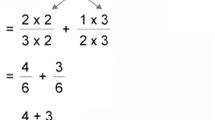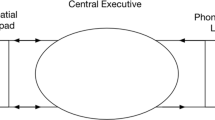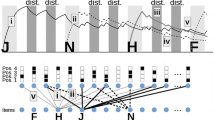Abstract
For a long time, Cognitive Load Theory has considered working memory models as tools to advance research on learning. It has used working memory capacity models, where working memory is viewed as being composed of a discrete number of slots (i.e., chunks) that can be kept active. However, recent results have shown that for a fixed quantity of information, the mere pace of information presentation can affect learning performance. Commonly used working memory models cannot explain such results. Here, we propose to use a new model in the field of Cognitive Load Theory, the Time-Based Resource Sharing model, which enables time to be taken into account when describing working memory solicitation. In two experiments, we tested hypotheses allowed by the model. Results showed that the Time-Based Resource Sharing model can assist the investigation of information presentation pace effects during learning, as long as prior knowledge is taken into account. Particularly, the results suggest a new interpretation of intrinsic and extrinsic load that could relate them to the time needed to process information.



Similar content being viewed by others
Notes
The SNARC effect (Spatial Numerical Association of Response Code) shows an association between numbers and spatial position. Small numbers are associated with left or top part of the screen and larger number with right or lower part of the screen. It was originally found with manual responses, responses with the left hand being faster than the right hand for small numbers and conversely, but further extended to cross modal responses and to all associations of space and numbers.
References
Adams, J. W., & Hitch, G. J. (1997). Working memory and children’s mental addition. Journal of Experimental Child Psychology, 67, 21–38.
Anderson, J. R. (2010). Cognitive psychology and its implications. New York: Worth Publishers.
Baddeley, A. D. (1986). Working memory. Oxford: Oxford University Press.
Baddeley, A. D., & Hitch, G. (1974). Working memory. The Psychology of Learning and Motivation, 8, 47–89.
Barrouillet, P., Bernardin, S., & Camos, V. (2004). Time constraints and resource sharing in adults’ working memory spans. Journal of Experimental Psychology: General, 133, 83–100.
Barrouillet, P., Bernardin, S., Portrat, S., Vergauwe, E., & Camos, V. (2007). Time and cognitive load in working memory. Journal of Experimental Psychology: Learning, Memory, and Cognition, 33, 570–585.
Barrouillet, P., & Camos, V. (2014). On the proper reading of the TBRS model: reply to Oberauer and Lewandowsky. Frontiers in Psychology, 5, 1–3.
Barrouillet, P., & Camos, V. (2015). Working memory: loss and reconstruction. New York: Psychology Press.
Broadbent, D. E. (1958). Perception and communication. New York: Pergamon Press Retrieved from: http://www.archive.org/details/perceptioncommunOObroa.
Bull, R., Espy, K. A., & Wiebe, S. A. (2008). Short-term memory, working memory, and executive functioning in preschoolers: longitudinal predictors of mathematical achievement at age 7 years. Developmental Neuropsychology, 33, 205–228.
Chanquoy, L., Tricot, A., & Sweller, J. (2007). La charge cognitive: Théorie et applications. Armand Colin.
Chen, O., Kalyuga, S., & Sweller, J. (2015). The worked example effect, the generation effect, and element interactivity. Journal of Educational Psychology, 107, 689–704.
Chen, O., Kalyuga, S., & Sweller, J. (2016). The expertise reversal effect is a variant of the more general element interactivity effect. Educational Psychology Review, 29, 1–13.
Chi, M. T. H. (2006). Two approaches to the study of experts’ characteristics. In K. A. Ericsson, N. Charness, P. J. Feltovitch, & R. R. Hoffman (Eds.), The Cambridge Handbook of Expertise and Expert Performance. Cambridge: Cambridge University Press.
Chi, M. T. H., Glaser, R., & Farr, M. J. (1988). The nature of expertise. Hillsdale: Erlbaum.
Cowan, N. (1995). Attention and memory: an integrated framework. Oxford Psychology Series, No. 26. New York: Oxford University Press (Paperback edition: 1997).
Cowan, N. (2014). Working memory underpins cognitive development, learning, and education. Educational Psychology Review, 26, 197–223.
Dehaenne, S., Bossini, S., & Giraux, P. (1993). The mental representation of parity and number magnitude. Journal of Experimental Psychology: General, 122, 371–396.
De Jong, T. (2010). Cognitive Load Theory, educational research, and instructional design: some food for thought. Instructional Science, 38, 105–134.
Ericsson, K. A. (2006). An introduction to Cambridge Handbook of Expertise and Expert Performance: its development, organization and content. In K. A. Ericsson, N. Charness, P. Feltovitch, & R. R. Hoffman (Eds.), Cambridge handbook of expertise and expert performance (pp. 3–19). Cambridge: Cambridge University Press.
Ericsson, K. A., & Kintsch, W. (1995). Long-term working memory. Psychological Review, 102, 211–245.
Ginns, P. (2005). Meta-analysis of the modality effect. Learning and Instruction, 15, 313–331.
Groen, G. J., & Parkman, J. M. (1972). A chronometric analysis of simple addition. Psychological Review, 79(4), 329–343.
Gulbinaite, R., Johnson, A., de Jong, R., Morey, C. C., & van Rijn, H. (2014). Dissociable mechanisms underlying individual differences in visual working memory capacity. NeuroImage, 99, 197–206.
Howell, D. C. (2007). Statistical methods for psychology (7th ed.). Boston: Cengage Learning.
Kalyuga, S. (2007). Expertise reversal effect and its implications for learner-tailored instruction. Educational Psychology Review, 19, 509–539.
Kalyuga, S., Ayres, P., Chandler, P., & Sweller, J. (2003). The expertise reversal effect. Educational Psychologist, 38, 23–31.
Leahy, W., & Sweller, J. (2016). Cognitive load theory and the effects of transient information on the modality effect. Instructional Science, 44(1), 107–123.
Moreno, R., & Valdez, A. (2005). Cognitive load and learning effects of having students organize pictures and words in multimedia environments: the role of student interactivity and feedback. Educational Technology Research & Development, 53, 35–45.
Oberauer, K., Farrell, S., Jarrold, C., & Lewandowsky, S. (2016). What limits working memory capacity? Psychological Bulletin, 142, 758–799.
Paas, F., Tuovinen, J. E., Tabbers, H., & van Gerven, P. W. M. (2003). Cognitive load measurement as a means to advance Cognitive Load Theory. Educational Psychologist, 38, 63–72.
Portrat, S., Camos, V., & Barrouillet, P. (2009). Working memory in children: a time constrained functioning similar to adults. Journal of Experimental Child Psychology, 102, 368–374.
Rahgubar, K. P., Barnes, M. A., & Hecht, S. A. (2010). Working memory and mathematics: a review of developmental, individual difference, and cognitive approaches. Learning and Individual Differences, 20, 110–122.
Salvucci, D. D., & Taatgen, N. A. (2010). The multitasking mind. Oxford: Oxford University Press.
Schmidt-Weigand, F., Kohnert, A., & Glowalla, U. (2010). A closer look at split visual attention in system- and self-paced instruction in multimedia learning. Learning and Instruction, 20, 100–110.
Schneider, W. (1985). Training high performance skills: fallacies and guidelines. Human Factors, 27, 285–300.
Spanjers, I. A. E., van Gog, T., & van Merrienboer, J. J. G. (2010). A theoretical analysis of how segmentation of dynamic visualizations optimizes students’ learning. Educational Psychology Review, 22, 411–423.
Sweller, J. (1988). Cognitive load during problem solving: effects on learning. Cognitive Science, 12, 257–285.
Sweller, J. (2010). Element interactivity and intrinsic, extraneous, and germane cognitive load. Educational Psychology Review, 22, 123–138.
Sweller, J. (2011). Cognitive Load Theory. In J. Mestre & B. Ross (Eds.), The psychology of learning and motivation: cognition in education (Vol. 55, pp. 37–76). Oxford: Academic.
Sweller, J., Van Merrienboer, J. J. G., & Paas, F. (1998). Cognitive architecture and instructional design. Educational Psychology Review, 10, 251–296.
Sweller, J., Ayres, P., & Kalyuga, S. (2011). Cognitive Load Theory. New York: Springer.
Tindall-Ford, S., Chandler, P., & Sweller, J. (1997). When two sensory modes are better than one. Journal of Experimental Psychology: Applied, 3(4), 257–287.
Van Gog, T., Paas, F., Marcus, N., Ayres, P., & Sweller, J. (2009). The mirror neuron system and observational learning: implications for the effectiveness of dynamic visualizations. Educational Psychology Review, 21, 21–30.
Vergauwe, E., Dewaele, N., Langerock, N., & Barrouillet, P. (2012). Evidence for a central pool of general resources in working memory. Journal of Cognitive Psychology, 24, 359–366.
Wilcox, R. R. (1987). New statistical procedures for the social sciences. Hillsdale: Erlbaum.
Zbrodoff, N. J., & Logan, G. D. (2005). What everyone finds. The problem-size effect. In J. I. D. Campbell (Ed.), Handbook of mathematical cognition (pp. 331–345). New-York and Hove: Psychology Press.
Author information
Authors and Affiliations
Corresponding author
Rights and permissions
About this article
Cite this article
Puma, S., Matton, N., Paubel, PV. et al. Cognitive Load Theory and Time Considerations: Using the Time-Based Resource Sharing Model. Educ Psychol Rev 30, 1199–1214 (2018). https://doi.org/10.1007/s10648-018-9438-6
Published:
Issue Date:
DOI: https://doi.org/10.1007/s10648-018-9438-6




